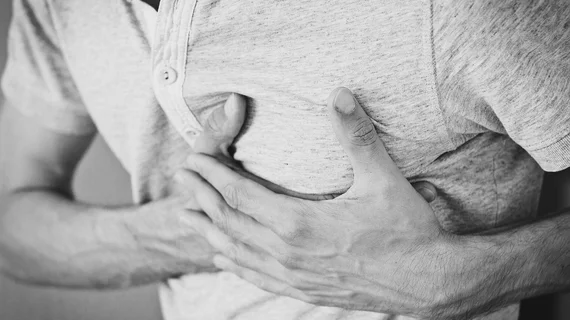Research published this week in Radiology suggests troponin-positive patients presenting with acute chest pain could benefit from a protocol that combines triple-rule-out and late contrast-enhanced CT scans.
Elevated troponin levels signal myocardial injury but specifying the root cause of such damage is challenging. And while coronary CT angiography in conjunction with a triple-rule-out (TRO) protocol is a valuable tool for triaging patients with acute chest pain it’s unable to identify nonvascular causes of acute injury.
Experts reasoned that these patients could benefit from a more comprehensive protocol that includes an angiographic CT as well as a late contrast-enhanced (LCE) scan for a more thorough cardiac assessment.
For the observational study, the researchers analyzed 84 troponin-positive patients who presented to emergency departments between June 2018 and September 2020.
Patients with inconclusive diagnoses after clinical evaluation underwent TRO-CT. If that scan was negative for CAD, acute aortic syndrome and pulmonary embolism, patients would then undergo an LCT-CT scan after a 10-minute delay to gauge myocardial extracellular volume fraction and assess for scarring.
Alone, TRO-CT identified obstructive CAD in 35 patients, acute aortic syndrome in one and pulmonary embolism in six.
LCE-CT scans were obtained for the remaining 42 participants. Those scans revealed additional diagnoses of myocarditis (22/42), takotsubo cardiomyopathy (4/42), amyloidosis (3/42), myocardial infarction (3/42), dilated cardiomyopathy (2/42) and inconclusive findings (8/42).
The diagnostic rate increased from 50% with TRO-CT alone to 90% when combined with the LCE-CT.
The authors maintain that this protocol is especially beneficial in emergency settings when obtaining cardiac MRI can be time consuming and cumbersome.
“The one-stop shop examination proposed in this study yields a significant improvement in CT capability to provide a definite diagnosis in the acute chest pain setting,” corresponding author, Antonio Esposito, MD, with the Clinical and Experimental Radiology Unit at San Raffaele Scientific Institute, and co-authors explained. “This protocol can speed up the final diagnosis because it allows radiologists to obtain, from a single CT study, several pieces of information commonly derived from combined CT and MRI examinations.”
You can view the detailed study in Radiology.

